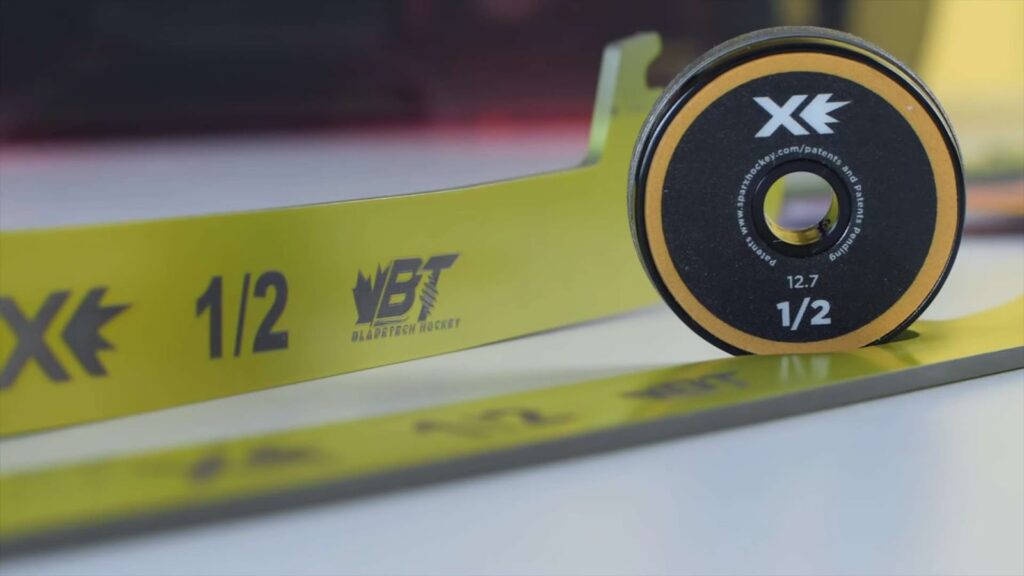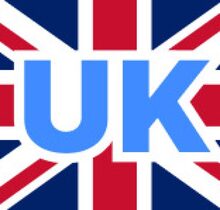Well-maintained skate blades are indispensable for a seamless and enjoyable skating and hockey encounter, as these steel runners, commonly referred to as blades, offer the essential traction required on icy surface. Should your skates possess blades displaying signs of wear, nicks, or irregular edges, the act of skating can swiftly transform into a notably arduous and vexing endeavor.
Understanding the ProSharp Profile Selection
The ProSharp profile refers to the shape of your skate blade’s underside – the part that actually interfaces with the icy surface. Generally, these profiles come as a traditional stock option, which is a single radius profile. This standard curve can provide basic performance but might limit the full potential of a player’s skating capabilities. To unlock the full weaponry in your skate, consider profiles with multiple curves – triple, quadruple, and Ellipse shapes that significantly improve your grip, gliding ability, and speed on the ice.
For those who prefer the conventional profile that remains the leading choice in the market, opt for the Stock (No Profiling) option during the checkout process. Once this is done, proceed to the next step which is ‘Selecting the Sharpening Shape’.
Single Radius
- Cost: $8 Standard Sharpening, $15 Channel-Z Sharpening;
- Type of Feel: Stock Profile for a Standard Feel;
- Details: This offers a neutral pitch, creating a flat feel that promotes stability. It’s an ideal choice for mastering the basic skating stride.
Triple Zuperior Radius
- Cost: $58 Standard Sharpening, $65 Channel-Z Sharpening;
- Type of Feel: Agility Profile for an Aggressive Feel;
- Details: The forward pitch is increased to feel as if you’re more on your toes, providing swifter agility and acceleration while optimizing balance.
Quad Radius
- Cost: $58 Standard Sharpening, $65 Channel-Z Sharpening;
- Type of Feel: Power Profile for a Balanced Feel;
- Details: Comes with a neutral pitch that feels centrally balanced. It enhances powerful strides and proves highly efficient during transitions.
Ellipse Radii
- Cost: $58 Standard Sharpening, $65 Channel-Z Sharpening;
- Type of Feel: Hybrid Profile for a Seamless Feel;
- Details: Neutral pitch but with a seamless feel from heel to toe. Dynamically enhances power and agility, making it a potent choice for diverse skating styles.
Picking the Right Sharpening Shape
The excitement of lacing up your skates and stepping onto the icy surface can only be amplified by the level of grip, speed, and control your blades grant. This largely depends on the Sharpening Shape or Hollow Profile – essentially the form of the groove carved into the steel blade.
Forget the one-size-fits-all approach; modern blade-profiling presents choices tailored to individual needs. Some might opt for the Traditional Shape, an all-time favorite, particularly fitting for beginners and recreational skaters. Others might go for the more innovative Channel-Z Shape, designed to amplify on-ice performance.
Traditional Sharpening Shape
- Cost: $8 with Stock (No Profiling), $58 with ProSharp Profiling
- Overview: A time-tested method that’s universally popular amongst professional and amateur hockey players. This original sharpening shape is the go-to option for a reliable, standard feel on the ice.
Channel-Z Sharpening Shape
- Cost: $15 with Stock (No Profiling), $65 with ProSharp Profiling;
- Overview: The modern take on blade-profiling, Channel-Z, integrates an additional bottom channel in the hollow. This design innovation promotes substantially enhanced grip, speed, and overall durability. With the extra grip provided, it’s advisable to go with a shallower hollow to maintain the same level of grip. Refer to our Hollow Equivalence Chart to ensure optimal results.
Remember, the type of sharpening shape you decide on can be pivotal for your hockey performance. It not only influences your speed and agility but also improves your blade’s longevity. It’s crucial to consider the level of your experience, your style of play, and the ice conditions before making a decision.
Determining the Right Sharpening Radius
Having configured the ProSharp Profile and Sharpening Shape, the next step lies in settling on the Sharpening Radius (also known as Hollow Radius). This factor dictates the depth of the groove etched into the steel blade, playing a pivotal role in the performance of your skates.
The thumb rule is simple – a deeper cut results in increased grip while a shallower cut affords improved glide. However, striking the right balance between the two is crucial for an optimal on-ice experience.
To aid in this, our recommendations differ for players of various skill levels:
For Junior and Youth Players
- Recommended Sharpening Radius: 1/2″ Standard Sharpening;
- Reasoning: Younger or less experienced players generally benefit from the extra grip provided with this radius, aiding them in developing their skating skills.
For Adult Players
- Recommended Sharpening Radius: 5/8″ Standard Sharpening;
- Reasoning: Adults, especially those with advanced skating skills, usually prefer a balance between grip and glide. This sharpening radius provides just that.
As players continue to hone their skating skills and grow, we suggest reducing the radius (making it shallower). This is because advanced players often require less ‘edge bite’ and can benefit from the enhanced speed and glide offered by a shallower hollow.
This is one of the key advantages of ProSharp Profiling. With a custom blade profile, players can maximize ice contact and increase glide without compromising on grip. For an optimal configuration, we recommend referring to the ProSharp Profile & Sharpening Recommendation Chart.
When to Sharpen Your Hockey Skates: Unlocking the Edge
Do you ever find yourself gliding across the ice, only to suddenly lose control and slip? It’s a frustrating experience for any hockey player, and it’s often a sign that your skate blades may have lost their edge. This phenomenon, known as “losing an edge,” can disrupt your performance on the ice. To determine whether it’s time to sharpen your hockey skates, you can perform a simple but effective test known as the “Touch Test.”
The Touch Test:
- Gently Examine the Blade Edges: Start by running your fingernail along the blade edges, from top to bottom;
- Check for Sharpness: If the blade edges don’t feel sharp or if you detect any nicks, gouges, or irregularities, it’s a clear indication that your skates need sharpening;
- Insight: Regularly performing the Touch Test can help you maintain peak performance on the ice and reduce the risk of accidents caused by dull blades.
Mastering the Art of Skate Maintenance: How Often Should You Sharpen Your Hockey Skates?
Congratulations, you’ve already mastered the art of recognizing when your beloved hockey skates are craving a sharpening session. Now, the million-dollar question echoes through your mind, “How often should I treat my skates to this rejuvenating ritual?” The answer, my fellow skater, is as intricate as your signature slapshot, contingent upon a medley of factors that sway your game and your blades. Let’s delve into this skate-sharpening odyssey and chart a course for success.

Frequency Recommendations:
- Indoor Play (Once a Month):
- Ideal for: The indoor aficionados, the rink rats, and those who engage in the controlled embrace of indoor hockey;
- Why: Sharpening your skates once a month suffices to keep you gliding gracefully on the polished surface of the indoor arena;
- Pro Tip: Invest in a high-quality skate sharpener or establish a rapport with your local pro shop for consistent excellence.
- Frequent Play (Twice a Month):
- Ideal for: The hockey die-hards, the weekend warriors, and those who practically live on the ice, racking up three or more weekly sessions;
- Why: Frequent play calls for frequent sharpening. Twice a month ensures your edges remain sharp and responsive;
- Gear Insight: Regular skate inspections between sharpenings can reveal issues that might need professional attention. Don’t ignore them; address them promptly to maintain peak performance.
- Outdoor Rinks and Harsh Conditions:
- Ideal for: The brave souls who skate beneath the open sky, facing the elements in colder climes, or on the rugged terrain of outdoor rinks;
- Why: Nature can be harsh on your blades, subjecting them to increased abrasion. As such, you might need more frequent sharpenings to counteract this wear and tear;
- Winter Wisdom: Be mindful of temperature fluctuations. Sharp blades can be affected by extreme cold, so adjust your sharpening schedule accordingly.
Keeping Your Hockey Skates Sharp: Tips for Prolonged Performance
Maintaining sharp blades isn’t just about knowing when to sharpen them; it’s also about taking proper care of your skates between sharpenings. Here are some valuable tips and accessories to help you keep your hockey skates sharp and ready for action:
Enhancing Skate Blade Sharpness
Keeping your skates sharp is essential for a smooth and efficient skating experience. While professional sharpening is crucial, there are accessories and tips that can help you maintain sharp blades even during emergencies. One of the most popular tools for this purpose is “The Re-Edger.” This handy gadget is a must-have in your skating toolkit. It excels at quickly fixing small nicks and imperfections on your skate blades, providing a temporary solution when you can’t get to a professional sharpener right away. Also, discover the secrets of pristine performance with our guide on how to clean roller skate bearings. Unlock smoother, faster rides today!
However, it’s important to note that The Re-Edger should not be seen as a substitute for professional sharpening. It’s a short-term fix to keep you going on the ice until you can get a proper sharpening. To ensure you’re always ready for action, consider these additional recommendations:
- Backup Blades: Besides The Re-Edger, make sure you have a pair of backup blades in your bag at all times. These should be professionally sharpened and ready to use. Having a spare set ensures you won’t be caught off guard by a dull blade, especially during crucial moments in your game or practice;
- Maintenance Routine: Develop a regular maintenance routine for your skates. This includes checking for nicks and sharpening your blades when needed. Staying proactive in caring for your equipment can extend the lifespan of your blades and improve your overall skating performance.
Sharpening New Hockey Skates
If you’ve recently acquired a pair of new hockey skates, it’s important to understand that they don’t come ready for gameplay right out of the box. Unlike regular re-sharpening, new hockey skates undergo a crucial process called cross-grinding before they are professionally sharpened. This step is essential to ensure the blades are balanced and free from any irregularities, providing you with a stable foundation for your skating adventures.
Here at IW Hockey, we go the extra mile by including cross-grinding in every sharpening service for new skates or blades at no additional cost. This means that when you purchase new skates from us, you can be confident that they will be meticulously prepared for optimal performance.
To maximize the longevity and performance of your new hockey skates, consider these tips:
- Break-in Period: Allow some time for your new skates to break in and adjust to your feet. This can improve comfort and overall fit, enhancing your skating experience;
- Regular Maintenance: Even with cross-grinding, it’s important to maintain your skates properly. Regularly check for any signs of wear and tear, and don’t forget to keep your blades sharp through professional sharpening services.
Recognizing the Need for Blade Replacement
Knowing when it’s time to replace your skate blades is essential for maintaining your performance and safety on the ice. There are several telltale signs to watch out for:
- Bottoming Out: If you find yourself consistently hitting your boot on the ice during aggressive turns, it’s a clear indication that your blades have worn down and need replacing;
- Decreased Responsiveness: If your skating strides feel less responsive and you’re struggling to maintain control, it’s likely that your blades have lost their edge. Dull blades can hinder your ability to maneuver effectively;
- Higher-End vs. Lower-End Steel: Keep in mind that the quality of the steel plays a significant role in blade longevity. Higher-end steel maintains its edges better than lower-end options, requiring less frequent sharpening and extending its lifespan;
- Rotating Replacement Blades: To further extend the life of your sharpened blades, consider rotating between multiple sets of replacement blades. This practice ensures that no single set is constantly under stress, leading to more even wear.
Conclusion
In summary, it is of utmost importance to prioritize the sharpening of your skates’ blades to elevate both the caliber of your skating endeavors and your overall hockey experience. These metallic runners, commonly referred to as blades, assume a pivotal role in affording the essential traction on the icy surface.
When your skates boast blades that are meticulously tended to and devoid of any signs of wear, imperfections, or irregular contours, you will undoubtedly notice a significant enhancement in the pleasure derived from skating. Thus, it is highly advisable to make an investment in the diligent care and upkeep of your skate blades to ensure a seamless and self-assured glide across the ice.









